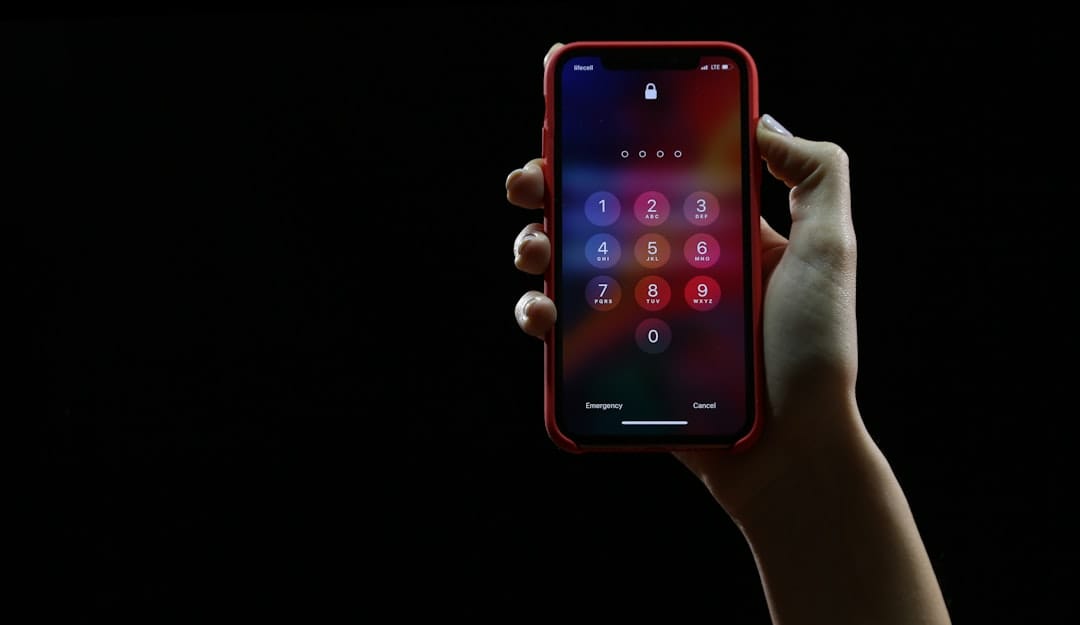The Internet of Things (IoT) has transformed our daily lives and work environments by connecting everyday devices to the internet, enabling data exchange. However, this interconnectivity introduces significant security vulnerabilities that can be exploited by malicious actors. IoT devices are often designed prioritizing user-friendliness over security, making them attractive targets for cybercriminals.
Many of these devices lack robust security features such as strong authentication and encryption, leaving them susceptible to attacks. Moreover, irregular security updates for IoT devices leave them exposed to known vulnerabilities. The widespread adoption of IoT devices across various sectors, including smart homes, industrial control systems, and healthcare, creates an extensive attack surface.
This proliferation means that a single vulnerability in an IoT device can have widespread implications, potentially compromising sensitive data or even threatening public safety. The potential consequences range from data breaches to disruptions in critical infrastructure. Given these risks, it is essential for both individual consumers and businesses to recognize the inherent vulnerabilities of IoT devices and implement appropriate security measures.
This includes regularly updating device firmware, using strong passwords, and implementing network segmentation to isolate IoT devices from critical systems. Additionally, manufacturers must prioritize security in the design and development of IoT devices, incorporating features such as end-to-end encryption and secure boot processes. As the IoT ecosystem continues to expand, addressing these security challenges becomes increasingly crucial.
Stakeholders across the industry, including device manufacturers, software developers, and cybersecurity experts, must collaborate to develop comprehensive security standards and best practices for IoT devices. This collective effort is necessary to ensure the continued growth and benefits of IoT technology while mitigating associated risks.
Key Takeaways
- IoT devices are vulnerable to security breaches due to their interconnected nature and lack of built-in security features.
- Unsecured IoT devices pose risks such as unauthorized access, data breaches, and potential exploitation for malicious purposes.
- Implementing strong passwords and encryption is crucial in protecting IoT devices from unauthorized access and data breaches.
- Securing IoT devices from malware and phishing attacks requires the use of firewalls, antivirus software, and regular security updates.
- Regular software updates are essential in addressing security vulnerabilities and ensuring the overall security of IoT devices.
The Risks of Unsecured IoT Devices
The risks of unsecured IoT devices are significant and wide-ranging. One of the most immediate concerns is the potential for unauthorized access to sensitive data. Many IoT devices collect and transmit personal information, such as location data, health information, and even audio or video recordings.
If these devices are not properly secured, this data can be intercepted by hackers and used for malicious purposes, such as identity theft or blackmail. In addition to the privacy implications, unsecured IoT devices can also be used as entry points into larger networks. Once a hacker gains access to an IoT device, they may be able to pivot to other connected devices or systems, potentially compromising an entire network.
Another major risk of unsecured IoT devices is the potential for physical harm. In some cases, IoT devices control critical infrastructure or industrial systems, such as power plants or transportation networks. If these systems are compromised, it could have devastating consequences for public safety and the economy.
Even in a residential setting, unsecured IoT devices like smart locks or security cameras could be manipulated by hackers to gain unauthorized access to a home or spy on its occupants. The risks of unsecured IoT devices are not limited to data breaches; they have the potential to impact every aspect of our lives. The risks of unsecured IoT devices are significant and wide-ranging.
One of the most immediate concerns is the potential for unauthorized access to sensitive data. Many IoT devices collect and transmit personal information, such as location data, health information, and even audio or video recordings. If these devices are not properly secured, this data can be intercepted by hackers and used for malicious purposes, such as identity theft or blackmail.
In addition to the privacy implications, unsecured IoT devices can also be used as entry points into larger networks. Once a hacker gains access to an IoT device, they may be able to pivot to other connected devices or systems, potentially compromising an entire network. Another major risk of unsecured IoT devices is the potential for physical harm.
In some cases, IoT devices control critical infrastructure or industrial systems, such as power plants or transportation networks. If these systems are compromised, it could have devastating consequences for public safety and the economy. Even in a residential setting, unsecured IoT devices like smart locks or security cameras could be manipulated by hackers to gain unauthorized access to a home or spy on its occupants.
The risks of unsecured IoT devices are not limited to data breaches; they have the potential to impact every aspect of our lives.
Importance of Implementing Strong Passwords and Encryption

One of the most basic yet crucial steps in securing IoT devices is implementing strong passwords and encryption. Many IoT devices come with default passwords that are easily guessable or widely known, making them vulnerable to brute force attacks. It is essential for users to change these default passwords to unique, complex ones that are difficult for hackers to crack.
Additionally, enabling two-factor authentication can provide an extra layer of security by requiring a second form of verification, such as a code sent to a mobile device. Encryption is another essential tool for protecting IoT devices and the data they transmit. By encrypting data at rest and in transit, even if it is intercepted by hackers, it will be unreadable without the encryption key.
This is particularly important for sensitive information such as personal or financial data. Many IoT devices come with built-in encryption features that can be enabled through their settings or companion apps. For devices that do not have native encryption capabilities, users can employ third-party encryption tools or virtual private networks (VPNs) to secure their data.
In addition to implementing strong passwords and encryption on individual devices, it is also important for manufacturers to prioritize security in their products. This includes building robust authentication mechanisms into the device’s firmware and ensuring that all communication between the device and other systems is encrypted. By taking these steps, manufacturers can help ensure that their products are not easily compromised by hackers.
One of the most basic yet crucial steps in securing IoT devices is implementing strong passwords and encryption. Many IoT devices come with default passwords that are easily guessable or widely known, making them vulnerable to brute force attacks. It is essential for users to change these default passwords to unique, complex ones that are difficult for hackers to crack.
Additionally, enabling two-factor authentication can provide an extra layer of security by requiring a second form of verification, such as a code sent to a mobile device. Encryption is another essential tool for protecting IoT devices and the data they transmit. By encrypting data at rest and in transit, even if it is intercepted by hackers, it will be unreadable without the encryption key.
This is particularly important for sensitive information such as personal or financial data. Many IoT devices come with built-in encryption features that can be enabled through their settings or companion apps. For devices that do not have native encryption capabilities, users can employ third-party encryption tools or virtual private networks (VPNs) to secure their data.
In addition to implementing strong passwords and encryption on individual devices, it is also important for manufacturers to prioritize security in their products. This includes building robust authentication mechanisms into the device’s firmware and ensuring that all communication between the device and other systems is encrypted. By taking these steps, manufacturers can help ensure that their products are not easily compromised by hackers.
Securing IoT Devices from Malware and Phishing Attacks
| Device Type | Malware Protection | Phishing Protection |
|---|---|---|
| Smartphones | Antivirus software, regular updates | Security awareness training, email filters |
| Smart TVs | Firewall, firmware updates | URL filtering, software updates |
| Smart Home Devices | Network segmentation, strong passwords | Multi-factor authentication, secure Wi-Fi |
Malware and phishing attacks are significant threats to the security of IoT devices. Malware can infect IoT devices through various means, such as malicious email attachments or compromised websites. Once installed on a device, malware can steal sensitive information, disrupt normal operations, or even turn the device into a botnet for launching further attacks.
Phishing attacks, on the other hand, involve tricking users into revealing their credentials or other sensitive information through fake emails or websites. To protect against malware and phishing attacks, it is essential for users to exercise caution when clicking on links or downloading attachments from unknown sources. Additionally, installing reputable antivirus software on all connected devices can help detect and remove malware before it causes harm.
Regularly scanning IoT devices for malware and keeping their antivirus definitions up to date is crucial for maintaining a secure environment. In addition to user vigilance, manufacturers play a critical role in securing IoT devices from malware and phishing attacks. This includes regularly updating device firmware to patch known vulnerabilities and implementing secure boot mechanisms to prevent unauthorized software from running on the device.
By taking these proactive measures, manufacturers can help ensure that their products are not easily compromised by malware or phishing attacks. Malware and phishing attacks are significant threats to the security of IoT devices. Malware can infect IoT devices through various means, such as malicious email attachments or compromised websites.
Once installed on a device, malware can steal sensitive information, disrupt normal operations, or even turn the device into a botnet for launching further attacks. Phishing attacks, on the other hand, involve tricking users into revealing their credentials or other sensitive information through fake emails or websites. To protect against malware and phishing attacks, it is essential for users to exercise caution when clicking on links or downloading attachments from unknown sources.
Additionally, installing reputable antivirus software on all connected devices can help detect and remove malware before it causes harm. Regularly scanning IoT devices for malware and keeping their antivirus definitions up to date is crucial for maintaining a secure environment. In addition to user vigilance, manufacturers play a critical role in securing IoT devices from malware and phishing attacks.
This includes regularly updating device firmware to patch known vulnerabilities and implementing secure boot mechanisms to prevent unauthorized software from running on the device. By taking these proactive measures, manufacturers can help ensure that their products are not easily compromised by malware or phishing attacks.
The Role of Regular Software Updates in IoT Security
Regular software updates are essential for maintaining the security of IoT devices. Just like any other software system, IoT devices are susceptible to vulnerabilities that can be exploited by hackers if left unpatched. Manufacturers release updates to address these vulnerabilities and improve overall device performance and stability.
It is crucial for users to regularly check for updates for all their connected devices and apply them as soon as they become available. This includes not only the device’s firmware but also any companion apps or software used to manage the device. Many manufacturers offer automatic update features that can simplify this process by installing updates in the background without user intervention.
In addition to applying updates promptly, users should also be mindful of end-of-life policies for their IoT devices. Manufacturers typically provide support and updates for a limited time after a product’s release before discontinuing it in favor of newer models. Once a device reaches its end-of-life date, it may no longer receive security updates, leaving it vulnerable to known exploits.
It is important for users to be aware of these policies and plan accordingly by replacing outdated devices with newer models that are still supported. Regular software updates are essential for maintaining the security of IoT devices. Just like any other software system, IoT devices are susceptible to vulnerabilities that can be exploited by hackers if left unpatched.
Manufacturers release updates to address these vulnerabilities and improve overall device performance and stability. It is crucial for users to regularly check for updates for all their connected devices and apply them as soon as they become available. This includes not only the device’s firmware but also any companion apps or software used to manage the device.
Many manufacturers offer automatic update features that can simplify this process by installing updates in the background without user intervention. In addition to applying updates promptly, users should also be mindful of end-of-life policies for their IoT devices. Manufacturers typically provide support and updates for a limited time after a product’s release before discontinuing it in favor of newer models.
Once a device reaches its end-of-life date, it may no longer receive security updates, leaving it vulnerable to known exploits. It is important for users to be aware of these policies and plan accordingly by replacing outdated devices with newer models that are still supported.

Network Segmentation: A Key Defense Mechanism
Segmenting your network into separate subnetworks using firewalls or virtual LANs (VLANs) is an effective way to prevent unauthorized access to your IoT devices. This isolation limits the potential impact of a security breach, as even if an attacker gains access to one subnetwork, they will not be able to access other parts of the network that contain sensitive information or critical systems.
Implementing Access Controls and Monitoring Network Traffic
In addition to network segmentation, implementing access controls such as role-based permissions can help prevent unauthorized users from tampering with your IoT devices’ settings or accessing sensitive data. This can be particularly important in business settings where multiple employees may need access to different parts of an IoT system. Furthermore, monitoring network traffic for suspicious activity can help detect unauthorized access attempts before they result in a breach.
Intrusion Detection and Prevention Systems
Intrusion detection systems (IDS) and intrusion prevention systems (IPS) can automatically flag and block potentially malicious traffic based on predefined rulesets. These systems provide an additional layer of protection against unauthorized access, helping to ensure the security and integrity of your IoT devices.
The Future of IoT Security: Emerging Technologies and Best Practices
As the number of connected devices continues to grow exponentially, so too does the need for robust security measures to protect them from cyber threats. In response to this growing demand, new technologies and best practices are emerging to enhance IoT security. One such technology is blockchain, which offers a decentralized approach to securing data transactions between IoT devices.
By creating an immutable ledger of transactions that is distributed across multiple nodes in a network, blockchain technology can provide greater transparency and integrity in data exchanges while reducing the risk of tampering or unauthorized access. Another emerging trend in IoT security is the use of artificial intelligence (AI) and machine learning algorithms to detect anomalies in device behavior that may indicate a security breach. By analyzing large volumes of data generated by IoT devices in real time, AI-powered security systems can identify patterns indicative of malicious activity and respond proactively to mitigate potential threats.
In addition to technological advancements, best practices such as regular security audits and employee training programs are becoming increasingly important in ensuring the overall security posture of IoT ecosystems. By staying informed about emerging threats and implementing
One related article to IoT and Cybersecurity is “Why Will the Metaverse Die?” which discusses the potential security risks and vulnerabilities that could arise as the metaverse continues to develop and expand. The article explores how the interconnected nature of the metaverse, combined with the use of IoT devices, could create new opportunities for cyber attacks and data breaches. It also delves into the importance of implementing strong cybersecurity measures to protect users and their data within the metaverse. You can read the full article here.
FAQs
What is IoT and cybersecurity?
IoT (Internet of Things) refers to the network of physical devices, vehicles, home appliances, and other items embedded with electronics, software, sensors, and connectivity that enables them to connect and exchange data. Cybersecurity, on the other hand, is the practice of protecting systems, networks, and programs from digital attacks.
Why is cybersecurity important in IoT?
Cybersecurity is crucial in IoT because the interconnected nature of IoT devices makes them vulnerable to cyber attacks. Without proper security measures, IoT devices can be hacked, leading to data breaches, privacy violations, and potential physical harm.
What are the common cybersecurity threats in IoT?
Common cybersecurity threats in IoT include malware, ransomware, DDoS (Distributed Denial of Service) attacks, unauthorized access, and data breaches. These threats can compromise the integrity, confidentiality, and availability of IoT systems and data.
How can IoT devices be secured from cyber attacks?
IoT devices can be secured from cyber attacks through measures such as encryption, authentication, regular software updates, network segmentation, access control, and the use of secure communication protocols. Additionally, implementing security best practices and conducting regular security audits can help mitigate risks.
What are the potential consequences of IoT devices being compromised by cyber attacks?
If IoT devices are compromised by cyber attacks, the potential consequences include unauthorized access to sensitive data, disruption of critical services, financial losses, damage to reputation, and even physical harm in the case of IoT devices used in critical infrastructure or healthcare.











Leave a Reply